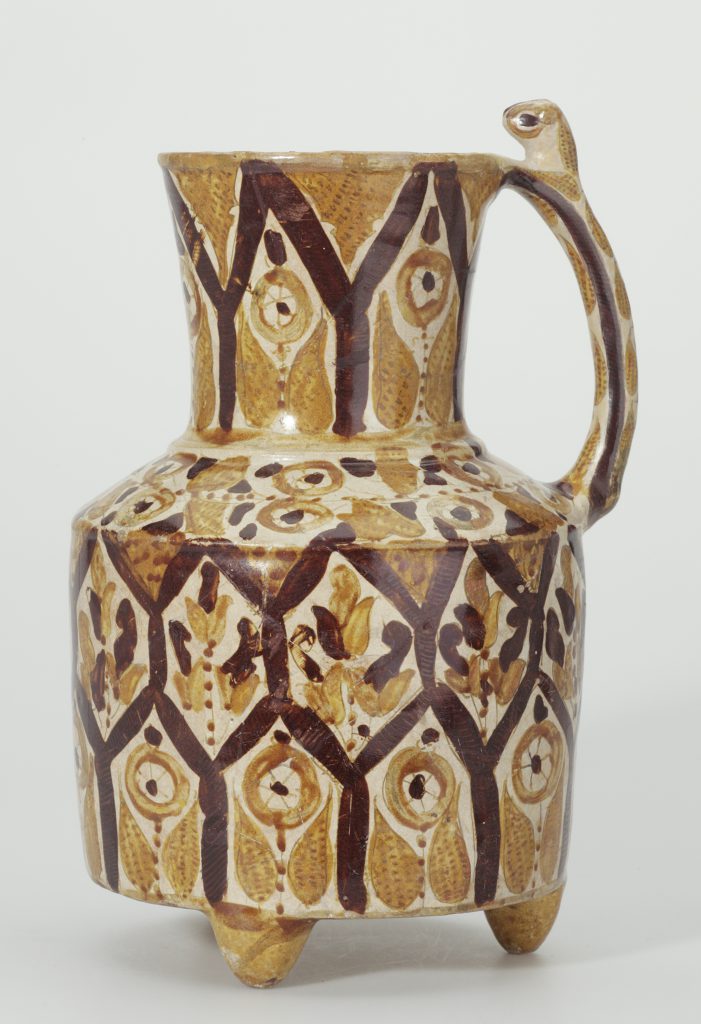



Title: Jug with Lustre Decoration
Date: 9th century AD
Location: Iraq
Materials: buff-bodied earthenware, painted with polychrome lustre on an opacified white tin glaze
Dimensions: 29 x 16.4cm
Accession Number: POT 101
Other Notes:
An important development in Islamic pottery was the discovery that the technique of lustre painting, which by the 9th century had been used for glass, could be applied to pottery with even more spectacular results, and also could be combined with in-glaze staining. By applying a combination of metallic oxides, sulphur and other substances to the glazed surface and firing in an oxygen-poor muffle kiln, an infinitesimally thin metallic layer of gold, silver or copper was deposited on the surface. However, the process was difficult to control; the ultimate effect depended to a large extent on the firing conditions in the kiln. Over-firing tended to dull the colours but a few surviving vessels with brilliant metallic gold lustre on a ruby ground give a good idea of what the potters intended to produce. Initially they aimed for polychrome decoration but later monochrome yellowish lustre became more popular.
Although lustre-painted wares, both vessels and tiles, were indisputably a luxury, fragments are represented in excavations with later 9th-century levels all over the Middle East, and even northern India, at Brahminabad in Sind. Unfortunately, we do not know where these lustrewares were made or, indeed, whether the kilns enjoyed a local monopoly. Although the most important finds have come from Samarra, the Abbasid capital on the Tigris north of Baghdad founded in 836, scholars have suggested the port of Basra as the centre of production. On the other hand, such was the mobility of potters that lustre pottery could well have been produced at cities like Susa in western Iran and in Egypt at Fustat (Old Cairo) too.
With its angular shoulders, low feet and handle in the form of an animal jumping up to the rim, the shape of this vessel derives from early Islamic metalwork, which also influenced contemporary glass. The exterior is decorated with a honeycomb pattern filled with floral or foliate motifs, including almond-shaped forms recalling the wings of Sasanian royal crowns.
Bibliography:
E.J. Grube et al, Cobalt and Lustre. The First Centuries of Islamic Pottery, The Nasser D Khalili Collection of Islamic Art, volume IX, London 1994, cat.20, pp.28–9.
J.M. Rogers, The Arts of Islam. Masterpieces from the Khalili Collection, London 2010, cat.22, pp.46–7.
Zoom
Close

Create your own collection of artworks that you can print or save as a PDF. Please enter you email to enable feature.
Small Flask | JLY 1075
Has been added to your collection.
TIP:
You can now access and view your collection from the main menu at any time.